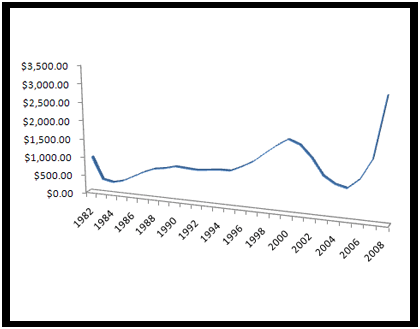Do Alaskans really get paid to live there? As long as you fulfill the criteria for receiving a Permanent Fund Dividend from the State of Alaska, the answer is yes (PFD). All eligible Alaskans will begin receiving payments in June of each year. We'll explain everything in detail if you're interested in relocating to Alaska. You should definitely take the time to learn whether you qualify and how to register for your reward since the payouts over the last decade have varied from $878 to $2,072.
What Is the Alaska Permanent Fund?
When oil was found in Prudhoe Bay, on Alaska's North Slope, in the spring of 1968, the world took notice. A constitutional amendment creating the Permanent Fund was approved by voters in 1976. The goal of the fund is to ensure that the state's oil and mineral resources will continue to provide for future generations of residents. Inflation-adjusted, the initial $734,000 contribution to the fund in 1977 is equivalent to around $3,350,728 now.
The Permanent Fund has been invested by the Alaska Permanent Fund Corporation in various sectors of the private and public markets over the last 40 years. The value of the fund as of April 2021 is $77,847,300,000. The Permanent Fund now serves a dual purpose. It helps fund governmental services and activities in Alaska, in addition to distributing dividends to qualified citizens each year. Since you know where it's coming from, we can look into whether or not you're eligible for a PFD this year.
Alaska Permanent Fund Dividends

Dividends are distributed annually from the Alaska Permanent Fund and are known as the Permanent Fund Dividend (PFD). The payout is only available to Alaskan citizens or permanent residents who have resided in the state for at least a full calendar year and plan to stay there. An individual's ineligibility might result from a number of different circumstances. A person's eligibility to receive the PFD may be terminated if they are convicted of a state felony, sentenced to imprisonment as a consequence of a state felony, or convicted of certain misdemeanors within the qualifying calendar year.
In 2021, each shareholder will get $1,114 in dividend payments. The 2020 payment was $992; thus, this is an increase. The highest annual payment was $2,069 in 2008. This figure is subject to change depending on the fund's earnings and the discretion of the law. Typically, the modification will be less than what was originally planned for 2018. As a kind of UBI, this dividend payment by the government on the back of investment returns from oil revenue is hard to ignore. The yearly contribution is obviously too little to serve as a sustainable source of income.
Other Sovereign Wealth Funds
Including Alaska, there are now nine countries with their own sovereign wealth funds. The money is used either to pay for designated programs or as a source of general income for the state government. Sovereign wealth funds are managed by the governments of Alabama, Alaska, Louisiana, Montana, New Mexico, North Dakota, Oregon, Texas, Utah, and Wyoming.
Funds accumulated from a nation's or state's reserves and invested for the benefit of the home nation's or state's economy and its population are known as sovereign wealth funds. A sovereign wealth fund is funded by a country's accumulated central bank reserves, which are the result of trade and budget surpluses. The sale of these commodities helps bring in more money.
The Benefits of Relocating to Alaska

Numerous factors make Alaska an attractive relocation option. The PFD unquestionably belongs in that group. On the other hand, living in Alaska entails more than just passing an annual check. When you relocate to the Frontier State, you will have the chance to live in and among some of the most beautiful, unspoiled natures that the United States has to offer. Once you make a move, you will have this opportunity. You will have life-changing experiences and bond with fascinating individuals. Awaiting you in Alaska is the whole experience.
Conclusion
The fund anticipates investing 39% of its money in public stocks and 21% in fixed income in 2021. The other 15% will be allocated to private equity and unique possibilities, while the remaining 9% will be invested in private income, infrastructure, and credit. The fund's goals include diversification and a 5% annualized return. The performance for the last five years, as of the 17th of June, 2022, is 12.27%.



